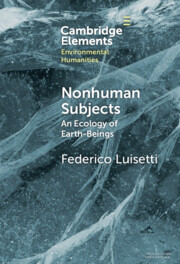Element contents
Nonhuman Subjects
Published online by Cambridge University Press: 29 November 2023
Summary
Keywords
- Type
- Element
- Information
- Online ISBN: 9781009442770Publisher: Cambridge University PressPrint publication: 21 December 2023
References
- 1
- Cited by



